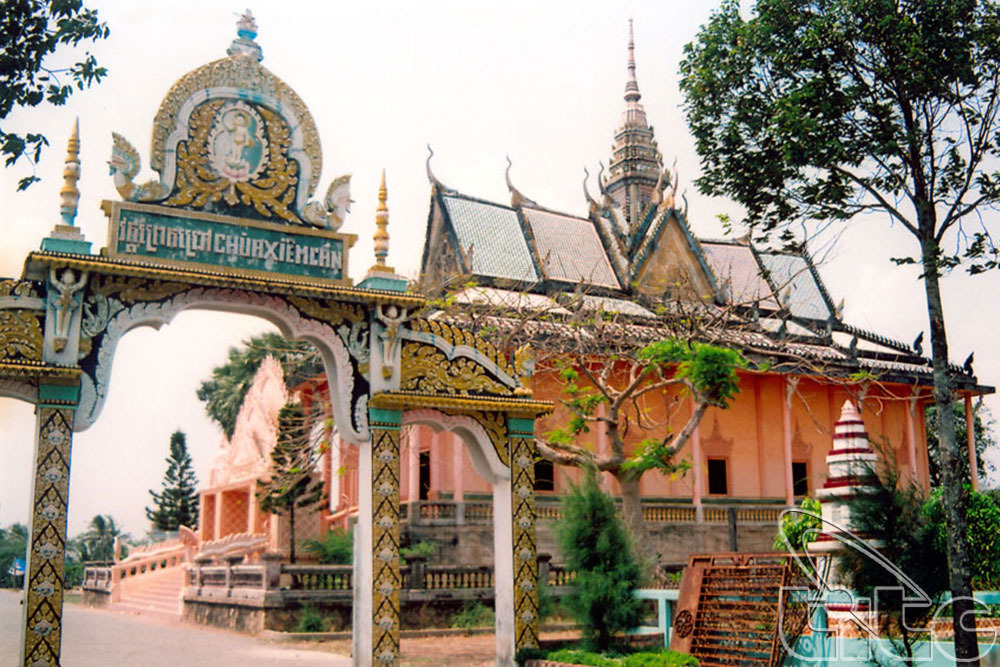Xiem Can Pagoda in the Mekong Delta province of Bac Lieu is a splendid architectural structure of the Khmer community and has long been a famous spiritual destination of the province.

Visiting the pagoda, one will understand why it is listed among the biggest and most splendid Khmer pagodas in southern Viet Nam. The pagoda was built in 1887 near a coastal alluvial ground that explains why the pagoda is called Xiem Can (literally bordering water) according to the language of the Jiezhou people who are mainly living in Bac Lieu Province).
Following a path shaded by rows of ancient longan trees in Hiep Thanh Commune, Bac Lieu City, tourists will arrive at the pagoda which is praised for its unique architecture. The pagoda’s gate, facing east, was painted dark yellow – the typical colour of the Khmer people that is very restful to the eyes. Above it are three towers designed with the Cambodian Angkor style and a delicately carved multi-head snake statue. The pagoda is surrounded by a wall with decorative images of snake genies and eye-catching colourful motifs.
From the gate, tourists will go through a spacious, airy and green area of ancient Sao (Hopea odorata) and Dau (Dipterocarpus altatus) trees to the central area which is extremely peaceful and serene. The main chamber was built facing the east on brick foundation, 1.5m high, with a surrounding corridor. The pagoda has a unique architecture of a multi-layered roof with a tower which was decorated with the statue of two headed dragons with curved tails like flames at every corner of the roof. The combination of the head, body and tail of the dragon form the shape of Ghe ngo which is considered a treasure of the Khmer community in each hamlet and is preserved at the pagoda.
Placed at the highest position inside the main hall is an altar of the largest statue of Buddha and other statues in different postures, representing each period of the incardination process of the Buddha. There are also some beautiful reliefs and decorative frescos on the walls, ceiling and pillars. They include frescos that depict the life of the Buddha and Reamker, the Cambodian version of Ramayana, one of the two great epics of Hinduism.
Outside and opposite the main hall is a pillar with the shape of a five-headed snake where the Khmer people often lit candles on special days, implying that the Buddhist tenets will shine for human beings and help them to live better and be inclined to do good.
The pagoda is also harmonious with the architecture of Sala – the place where monks and the Khmer people gather to prepare for important ceremonies. There are many towers where ashes of dead monks are preserved. It is a typical feature that helps distinguish the Khmer pagodas with others seen from outside.
For years, Xiem Can Pagoda has not only been a place for the Khmer community to practice their religious activities but also a centre of Khmer culture and education. Before reaching the age of 18, Khmer children will be brought to the pagoda to learn about Khmer script, Buddhism and the cultural characteristics of the Khmer community during a three year period.
During major Khmer festivals, Xiem Can Pagoda is filled with locals and visitors who come to pray for luck and happiness.